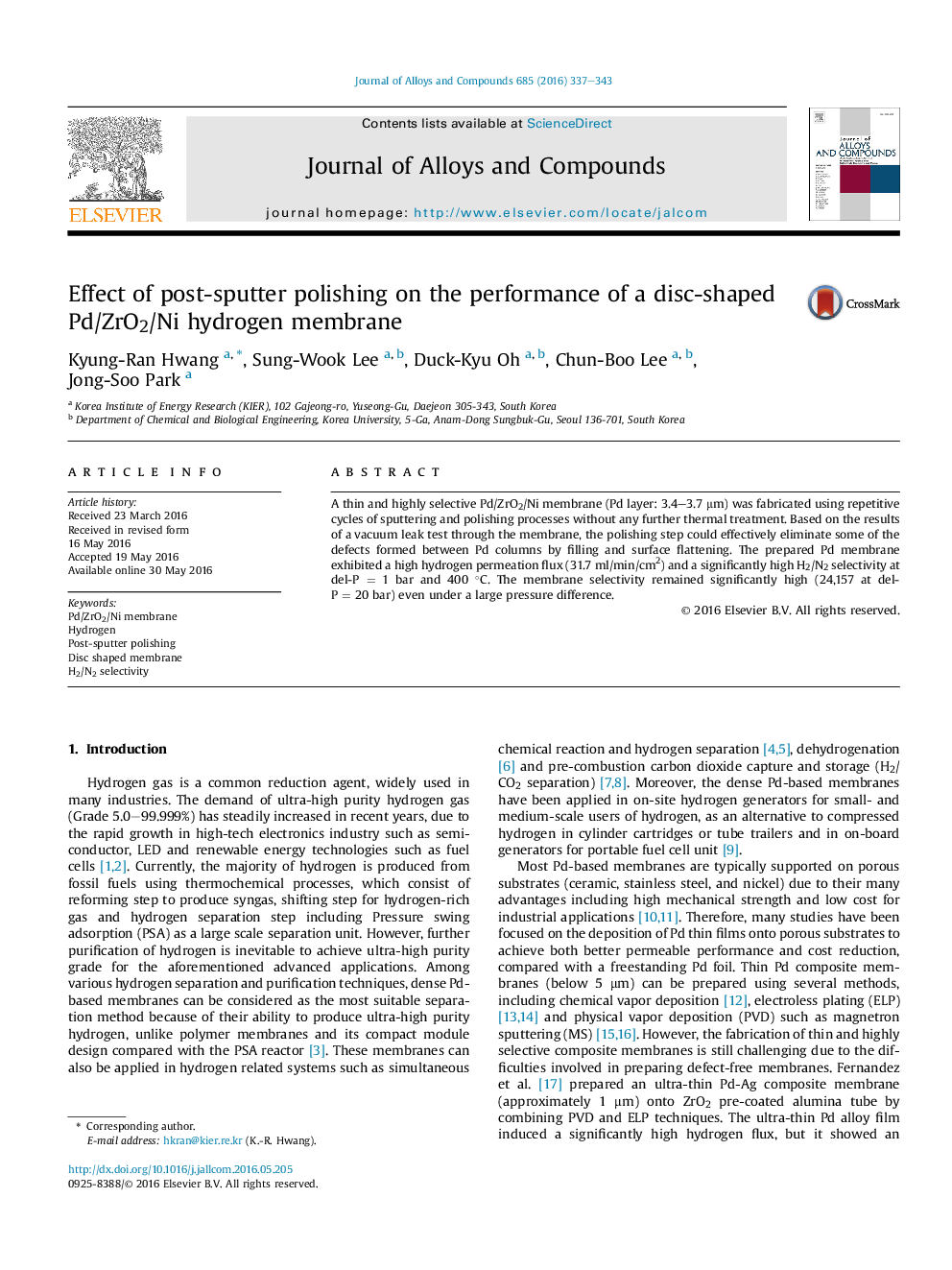| Article ID | Journal | Published Year | Pages | File Type |
|---|---|---|---|---|
| 1605040 | Journal of Alloys and Compounds | 2016 | 7 Pages |
•The repetitive sputtering and polishing process ensured a thin and highly selective Pd/ZrO2/Ni membrane.•The repetitive polishing steps made the sputtered Pd clusters dense without any further thermal treatment.•Rate-determining step for hydrogen permeation of SSP membrane was proposed.•SSP membrane showed a higher H2/N2 selectivity than OSP membrane.
A thin and highly selective Pd/ZrO2/Ni membrane (Pd layer: 3.4–3.7 μm) was fabricated using repetitive cycles of sputtering and polishing processes without any further thermal treatment. Based on the results of a vacuum leak test through the membrane, the polishing step could effectively eliminate some of the defects formed between Pd columns by filling and surface flattening. The prepared Pd membrane exhibited a high hydrogen permeation flux (31.7 ml/min/cm2) and a significantly high H2/N2 selectivity at del-P = 1 bar and 400 °C. The membrane selectivity remained significantly high (24,157 at del-P = 20 bar) even under a large pressure difference.
